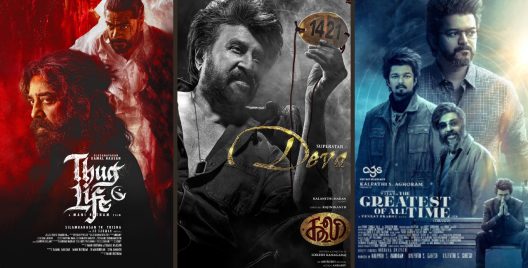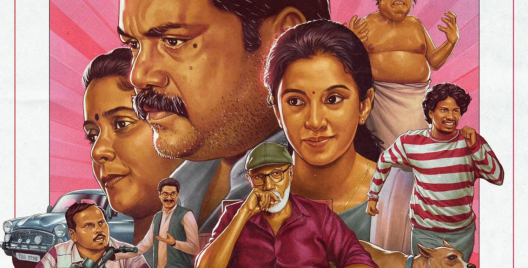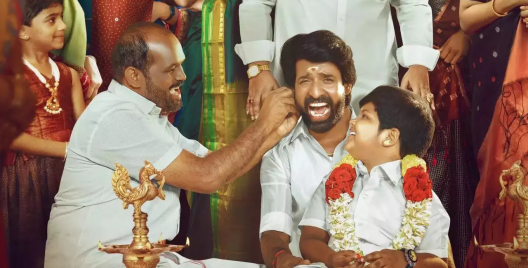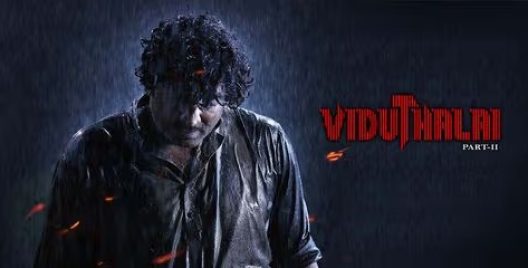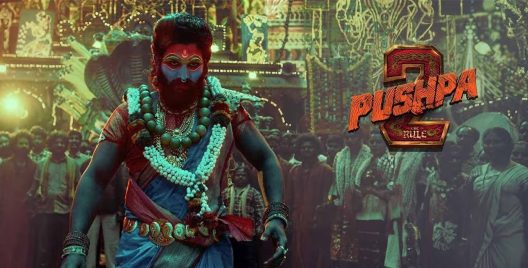45 minutes into Vettaiyan, you see a woman being hit to death. Weapons and blood baths don’t really scare Tamil audiences anymore – because like songs, they are now a part of every movie they watch. But wait, the woman is not dead yet. She lies there, breathing her last few moments and the unknown man rapes her. The camera, a stand-in for the perpetrator’s perspective, shows how the man wants to undress her, lifting up her saree and trying to unhook her blouse. The visuals are voyeuristic and disturbing. However, that’s not the only issue. The death sequence and the violence inflicted on her are repeated about 10 times in the film – whenever there is a twist or cops find a new clue. Out of which, at least 5 times, the rape sequence is shown, sometimes even captured from a different angle. Can we not let a dead woman rest in peace?
The need for shock value and evoking emotions in viewers is understood. However, portraying sexual violence on-screen needs to be handled with more responsibility. Sadly, Vettaiyan isn’t an exception. While some films depict sexual violence without much sensitivity, a few other films use it as merely a plot device to drive the story forward. If a man is seeking revenge, if a protagonist needs a hero moment, if a villain’s vileness needs to be depicted – the lens turns towards capturing a sexual assault. But does that plot really require a rape crime?
Agreed, Tamil cinema has evolved a lot – remember the days when reel panchayats and lead protagonists suggested that the rapist marry the survivor? With more awareness, some films have dealt with on-screen portrayal of sexual violence with more sensitivity. However, there is still a long way to go. And there is a need to answer the whys and hows of it. Why does a rape sequence need to be a part of a film? How does one capture such a sequence?
Why?
Rape-revenge films are a genre unto themselves. If you see a hero going on a killing spree, there is probably a flashback hidden where his lover, sister or someone close was raped and murdered. He then seeks revenge for the crime committed. But the sheer number of films made in this genre makes you question the origin of such stories. Is a woman raped on screen merely because the man could jump into action and seek vengeance?
If the rape-revenge genre films have become so frequent and monotonous, the casual way of including random sexual harassment sequences to introduce/establish an antagonist is even more agonising. Take Lokesh Kanagaraj’s Leo for instance. Here, Mysskin and Sandy are introduced as contract killers who would do anything for money. In the very first scene, you understand their wickedness as they break into a house and callously slit throats. But no, that doesn’t seem enough. He needs to show his evil lust for the young girl, who is already scared and is hiding in a corner. This sequence adds nothing to the plot, except instilling a certain fear about these two characters which we feel even otherwise. Then, was the rape sequence even necessary in the film?
The third reason rape or sexual assault is included as a part of the script even though it may be trivial to the plot development is hero worship. When you need to give your hero a saviour glow, such sequences tend to crop up. Given that we are consuming pan-India content, it’s not easy to overlook these troupes which is quite evident in Salaar. In this Prasanth Neel directorial, an entire village of red-clad women is created solely, solely for Prabhas’ Deva to get a hero transformation. You don’t see the women before or after this sequence in the film. The whole village is created, the women are tortured, and young girls are shown to be traumatised – everything to establish the villain’s negative tones and the hero to get a literal god-like transformation. And there’s more to this film. There are sequences depicting Aadhya (Shruti Haasan) being touched and teased by a few rowdies, only to show how Deva is in a helpless situation and chooses to not stand up for her. The women characters in such films are exploited only to make a hero a hero, or sometimes a demi-god.
Films like Chithha and Gargi fall into a whole different category, where an awareness against such abuse is created. Here, sexual violence becomes an indispensable part of the story. While Chithha talks about child abuse, speaks from the perspective of the survivors and raises the debate against rape-revenge films, Gargi deals with how a woman reacts when her father is an abuser – both films put forth important arguments, creating a necessary conversation among audiences.
Why not?
Sexual violence has been excessively used as a plot device in multiple films in the past decades, which is both disturbing and done to death. And graphic details of multiple acts of violence are today a part of our films. This desensitises the viewers, and like how violence is now stomached enough, sexual violence too is slowly trivialised and normalised.
Secondly, everyone has a different threshold for handling violence on screen, the same applies to sexual violence, which adversely impacts many. In The Woman Dies, Aoko Matsuda writes, “The woman is raped. The woman is raped as a shocking plot development. We don’t understand it, and yet the violent scenes traumatise us. It’s so traumatic that even when we reach adulthood, we find ourselves replaying those scenes in our heads.” The detailing of such sequences continues to traumatise much beyond the end credits roll. And what are these gory details about? It’s about the woman’s body, the pleasure the perpetrator experiences (like the leery expression of the abuser in Maharaja), and the helpless gazes and sounds of the survivor. It’s one thing to note that a crime has taken place, and another to depict the graphic details of the crime with voyeuristic shots.
How?
Many Kollywood films and series portray sexual violence in alarmingly unsettling ways, the ways that don’t really need to be recalled here; for an average Tamil moviegoer knows it well enough. From the gut-wrenching Paruthiveeran sequence to Suzhal: The Vortex and Chithirai Sevvanam, there is a long list of films that focus on graphic detailing. It’s not that these works glorified the crime, but the visuals weren’t shot with sensitivity and caution.
Three big films in 2024 – Raayan, Vettaiyan and Maharaja – deal with sexual violence and rape revenge. In the Vijay Sethupathi starrer, two men go around thieving and murdering people. After stealing, one of them is shown to rape the woman in the house, and the film suggests that it’s their casual pattern of crime. While one of the men pulls a girl inside a room, the other man relishes the food at their home. The same depiction repeats when another girl is raped in the film. Sadly, this isn’t the first time such comparisons are drawn between a woman and a piece of meat, treating them as an object of desire. While Maharaja doesn’t show the disturbing visuals, the horrors of the violence are still magnified through such unpleasant comparisons, the lubricious expressions of the villains and the women’s horrifying cries.
Just like in Vettaiyan, Chithha too has recorded evidence of what looks like sexual assault. However, director Arun Kumar never shows us the video. Instead, we only see the reactions of the people who watch the video and it creates the intended effect. Gargi has a sequence involving the blood-stained staircase and clothing while a lawyer explains the incident but the assault is never shown. And yet, the sequence terrors you and evokes sympathy.
In the recent series Goli Soda Rising, a young boy speaks about being sexually assaulted in the Koyambedu market. The makers, however, avoid the visual depiction and choose to weave a conversation to reveal the incident. “Enga engayo thodaraanga, market ivalo perusa yaarunu therila,” the boy tells the owners of a food joint. Speaking of the “need”, probably such a sequence doesn’t add much to the story of the series but the way it’s nestled within the narrative, helps you understand the horrors of living in the streets and how a young boy is trying to survive daily. Even without the visual expression of the crime, the scene hits us hard, leaving a lump in our throats. A similar technique was used in Raayan, where we are only told that Durga (played by Dushara Vijayan) has been raped. A mainstream film adopting this method is a welcome move from Dhanush. This also makes us wonder if the makers should reverse the “show, don’t tell” formula while dealing with sexual violence crimes.
It is reassuring to see many such Tamil films and series responsibly portray sexual violence, especially over the past two years. Sexual violence is a crime that happens regularly in real life. Cinema, being a reflection of reality, can and must include stories of sexual violence. However, the why, what and how of such sequences need to be examined and rethought.





